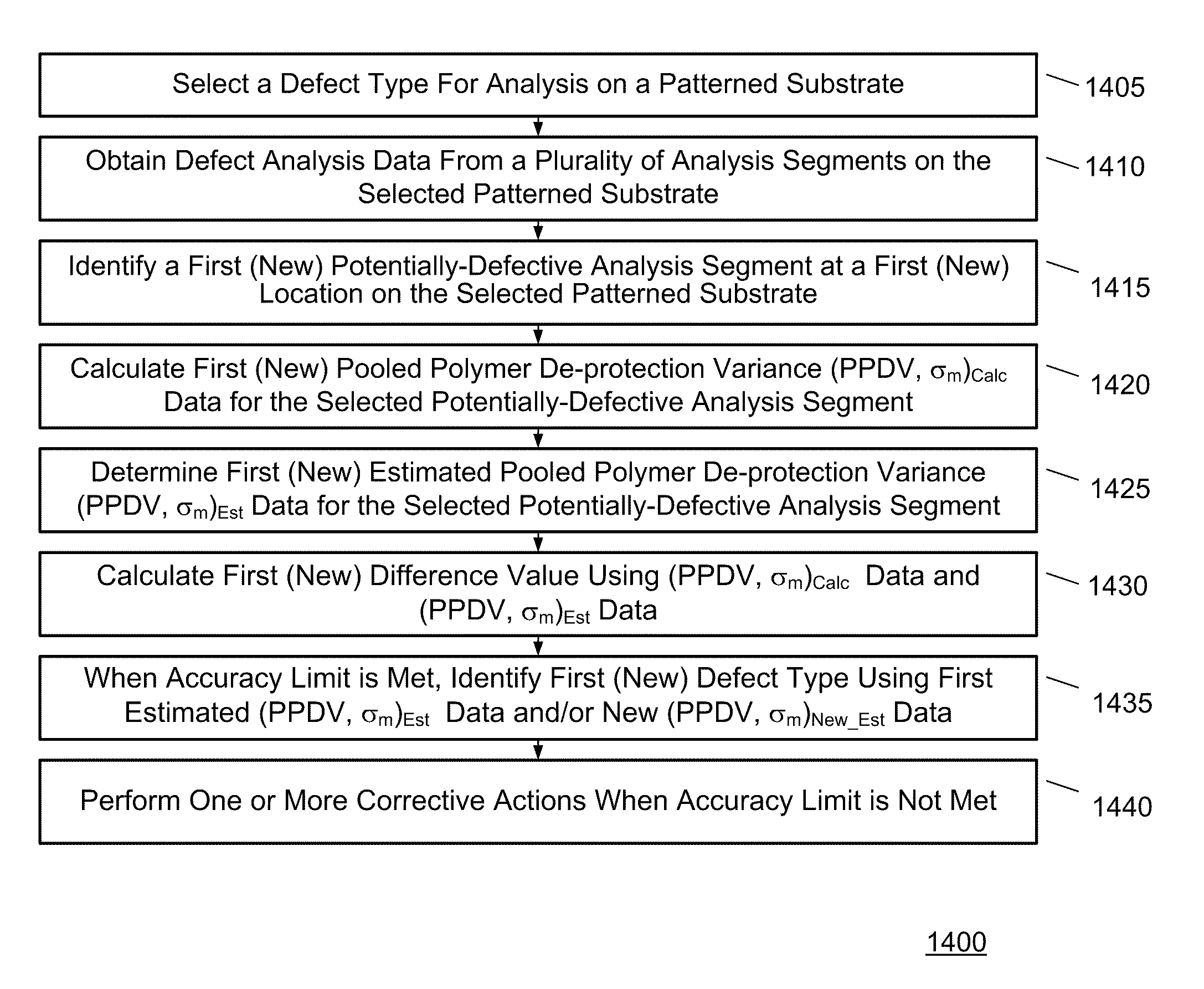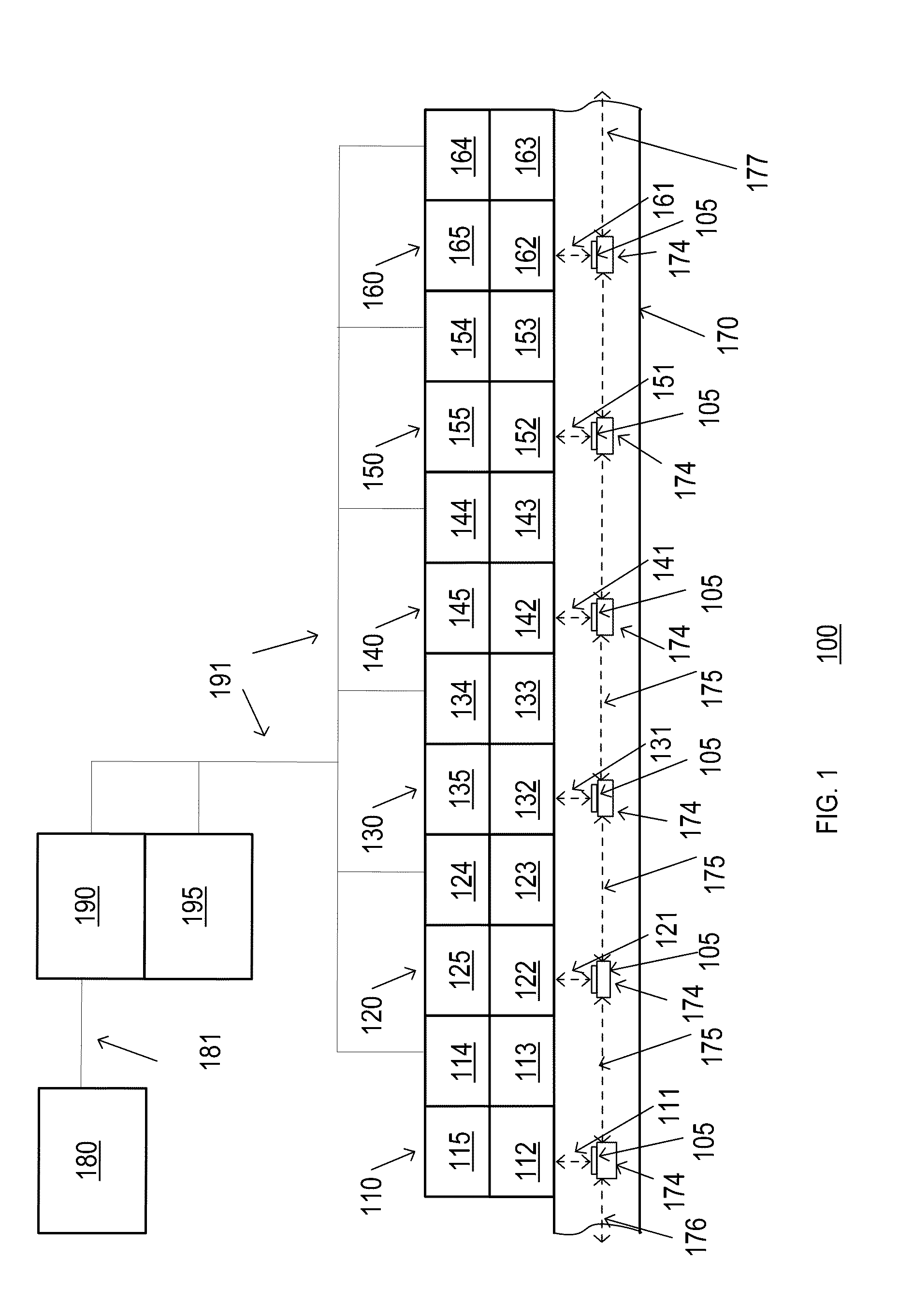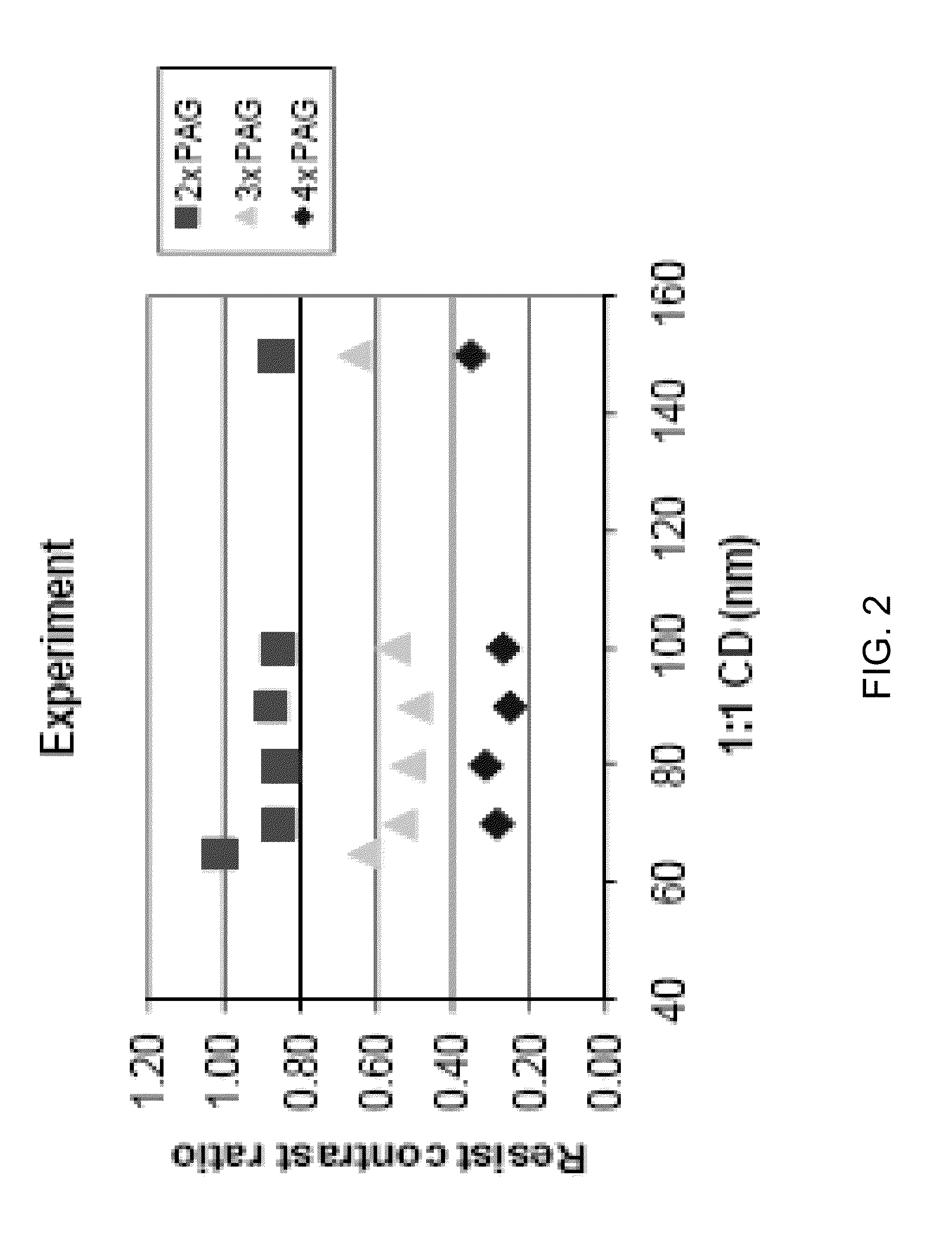Simplified micro-bridging and roughness analysis
a micro-bridging and analysis technology, applied in the field of substrate processing, can solve the problems of not being able to solve the requirement of line width roughness (lwr), chemical processes becoming more sensitive to defects or patterning errors, and hurting process speed/leakage, so as to simplify the calculation of line edge roughness and improve process yield
- Summary
- Abstract
- Description
- Claims
- Application Information
AI Technical Summary
Benefits of technology
Problems solved by technology
Method used
Image
Examples
Embodiment Construction
[0031]This invention provides methods and apparatus for creating calibrated resist models that capture the exposure kinetics, acid diffusion properties, de-protection kinetics, and dissolution response as a function of Photo Acid Generator (PAG) loading in 193 nm and smaller polymer systems. The invention uses calibrated resist models to quantify the resolution and sensitivity performance tradeoffs as well as the degradation of resist contrast relative to image contrast at small dimensions.
[0032]The calibrated resist simulations, which are used today, are capable of quantifying resolution and sensitivity tradeoffs, but lack the ability to model LWR. The inventor knows LWR is challenging to simulate (lattice models) and to measure due to the dependence on spectral frequency, and the inventor has developed novel techniques that use statistical data from micro-bridging experiments and historical data as means to better understand the statistical nature of LWR. Micro-bridging analysis p...
PUM
 Login to View More
Login to View More Abstract
Description
Claims
Application Information
 Login to View More
Login to View More - R&D
- Intellectual Property
- Life Sciences
- Materials
- Tech Scout
- Unparalleled Data Quality
- Higher Quality Content
- 60% Fewer Hallucinations
Browse by: Latest US Patents, China's latest patents, Technical Efficacy Thesaurus, Application Domain, Technology Topic, Popular Technical Reports.
© 2025 PatSnap. All rights reserved.Legal|Privacy policy|Modern Slavery Act Transparency Statement|Sitemap|About US| Contact US: help@patsnap.com



